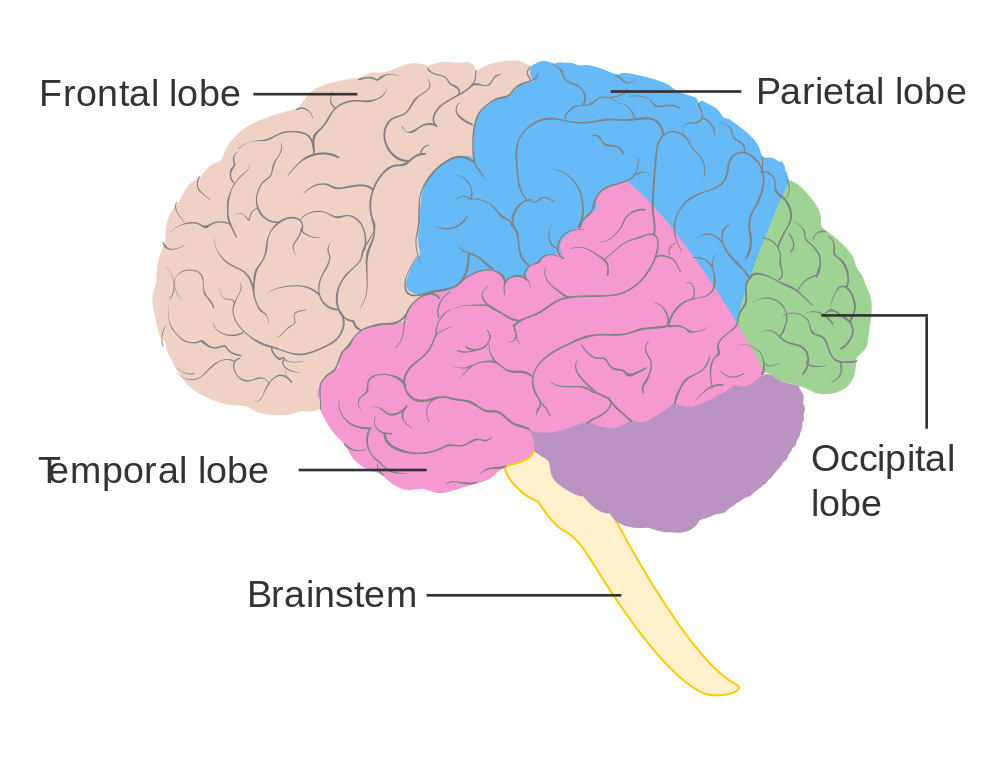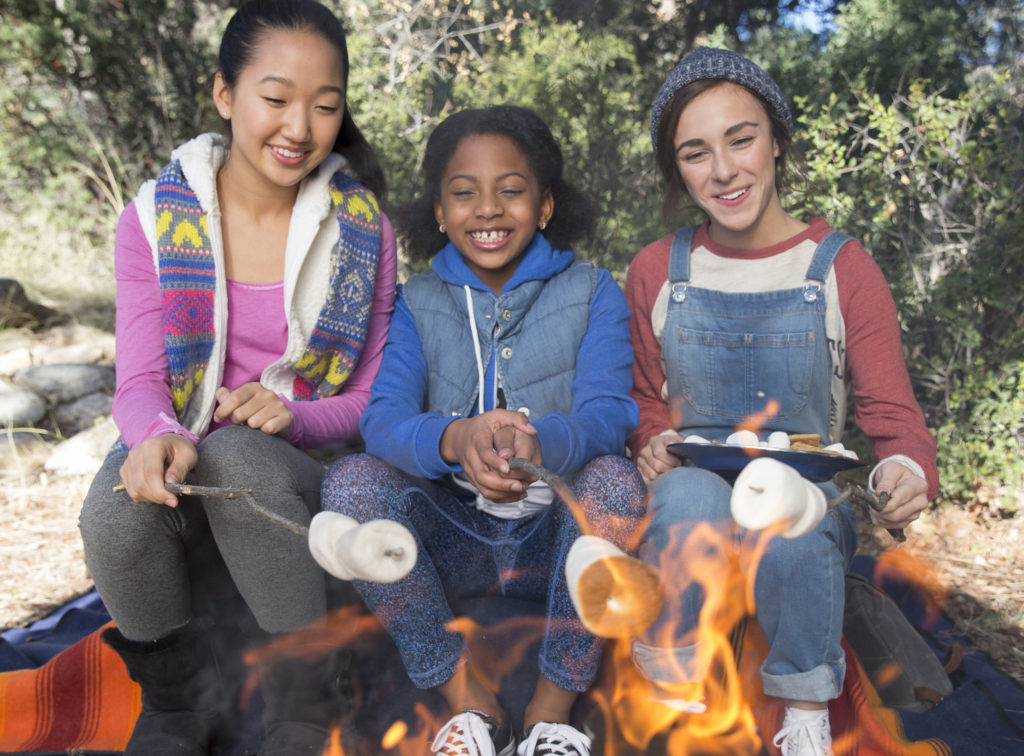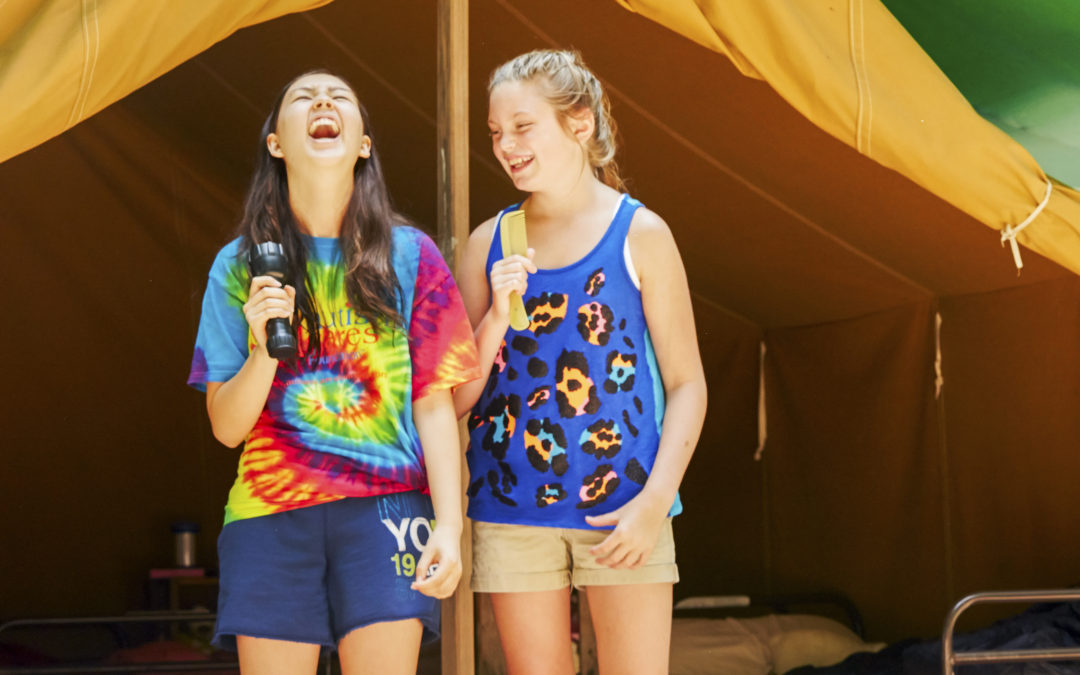With summer camp registration in full swing at GSNorCal, we’ve got camp on the mind! But as a parent, you may be thinking, “Why should I send my girl to summer camp?” Aside from enjoying some much needed outdoor fun, girls acquire a variety of long-term benefits from camp, such as enhanced social skills, increased confidence levels, and a stronger sense of independence that will help them succeed in the future.
But did you know, summer camp actually affects the physical structure of children’s brains? According to Dr. Tina Payne Bryson, child development director at Lantern Camps, author of the best-selling book, The Whole-Brain Child, and subject matter expert in American Camp Association’s “Bunks Are Good for Brains: The Neuroscience of Sleepaway Camp” article, camp experiences shape the development of children’s middle prefrontal cortex – the center of emotional health and social success.
Let’s kick things off with a few brain basics!
For those of you who may be unfamiliar with the human brain, I’m here to translate Dr. Bryson’s scientific findings regarding the brainy benefits of Girl Scout camp! (By the way—you might be thinking, “Leah works for GSNorCal’s Marketing Department, what in the world does she know about brains?” Well, I’m no neuroscientist but, fun fact: in addition to earning a B.A. in Communication to sharpen my witty writing skills, I also earned a B.S. in Cognitive Science, so I’m actually quite familiar with psychology and neuroscience terminology. 🙂 )
Now, before jumping into Dr. Bryson’s “Neuroscience of Sleepaway Camp”, let me introduce some helpful brain basics. In the world of neuroscience, we look at the relationship between the brain’s structure and its function in order to understand which parts of the brains do what. In short, the brain is split into four sections or lobes: temporal lobe, parietal lobe, occipital lobe, and frontal lobe where each lobe is associated with a certain bodily function. For example, the occipital lobe is located towards the back of the head and works to process visual information while the temporal lobe is located towards the bottom of the head and works to process auditory information.
Dr. Bryson’s research focuses on the frontal lobe, specifically the middle prefrontal cortex, which is located behind the forehead and is generally involved with higher-level decision making, emotion regulation, and empathy.

Even though the brain is only separated into four different lobes, it is actually an extremely complicated organ composed of billions of interconnected nerves called neurons. Think of these neurons as wires that send messages across the different parts of the brain. And with each novel experience, the neurons create new, faster, more efficient pathways throughout the lobes that change the physical structure of the brain. In addition, children’s brains are said to be more “plastic” or malleable, allowing the neuronal connections in their brains to grow more frequently and easily, which is why we try to teach them so much at such a young age. As Dr. Bryson mentioned, “when the structure of the brain changes, the function of the brain changes”, so even though we cannot see the brainy wires in action, children’s behavioral changes reveal the microscopic developments that camp experiences create in the brain.
So what does that have to do with how camp affects your girl’s brain?
As magical as the brain sounds, children still need a compelling environment that encourages them to take risks and discover new things. Overnight summer camps provide children with unique, challenging experiences that they can’t find in their everyday routines. According to Dr. Bryson, even though children have dynamic learning environments at home, at camp “kids are willing to work harder and tolerate more frustration and setbacks because they’re having a good time doing it”. In other words, with the support of camp staff and fellow campers, children are able to adapt to their new surroundings while having fun, which allows their brains to do the same.
At overnight camps, children are immersed into an unfamiliar world full of physical and emotional challenges, like making new friends, scaling a towering tree, and dealing with homesickness, that alter the neural wiring of their brains. And like a muscle, working through these personal hardships helps children’s brains grow and strengthen – especially the middle prefrontal cortex, which improves their long-term social and emotional health.

Luckily, our GSNorCal camp staff is in the know, which is why our camps continue to thrive! As a parent or volunteer, you might not get the chance to see a brain scan proving your child’s developed brain structure, but the behavioral changes will definitely prove that our camps are doing something right. Every camp activity is crafted in a way that benefits girls – archery improves their attention, overnight trips help them overcome their fear of being away from home, ropes courses teach them teamwork, the list goes on. With GSNorCal’s camp programs, your girls will have the opportunity to explore and conquer unfamiliar territory every day, so find her camp today and sign her up for a summer full of memorable, brain developing activities!
To learn more about the benefits of camp and child brain development, check out the full article on ACA’s website or Dr. Tina Payne Bryson’s website.

Leah Takahashi—Leah is the Marketing Manager for Girl Scouts of Northern California, where she conceptualizes campaigns, plans projects, and manages marketing assets for all departments at GSNorCal in order to promote the Girl Scout brand and mission. Leah joined Girl Scouts at the age of 5 and has been a part of the organization ever since (shout out to Troop 31213—woot woot). During her younger Girl Scout days, Leah did everything from selling thousands of boxes of Girl Scout Cookies to serving as a National Delegate at the 2011 Convention and even earning her Gold Award in 2012. She may be young, but she’s got plenty of Girl Scout experience under her belt!



Wow, way to go Leah!! Putting your degree to good use 🙂
Love, love this article!! Supports just about every good thing we’ve ever known that comes our of GSNorcal camp. And you can’t beat the memories these girls will have for a lifetime, either.